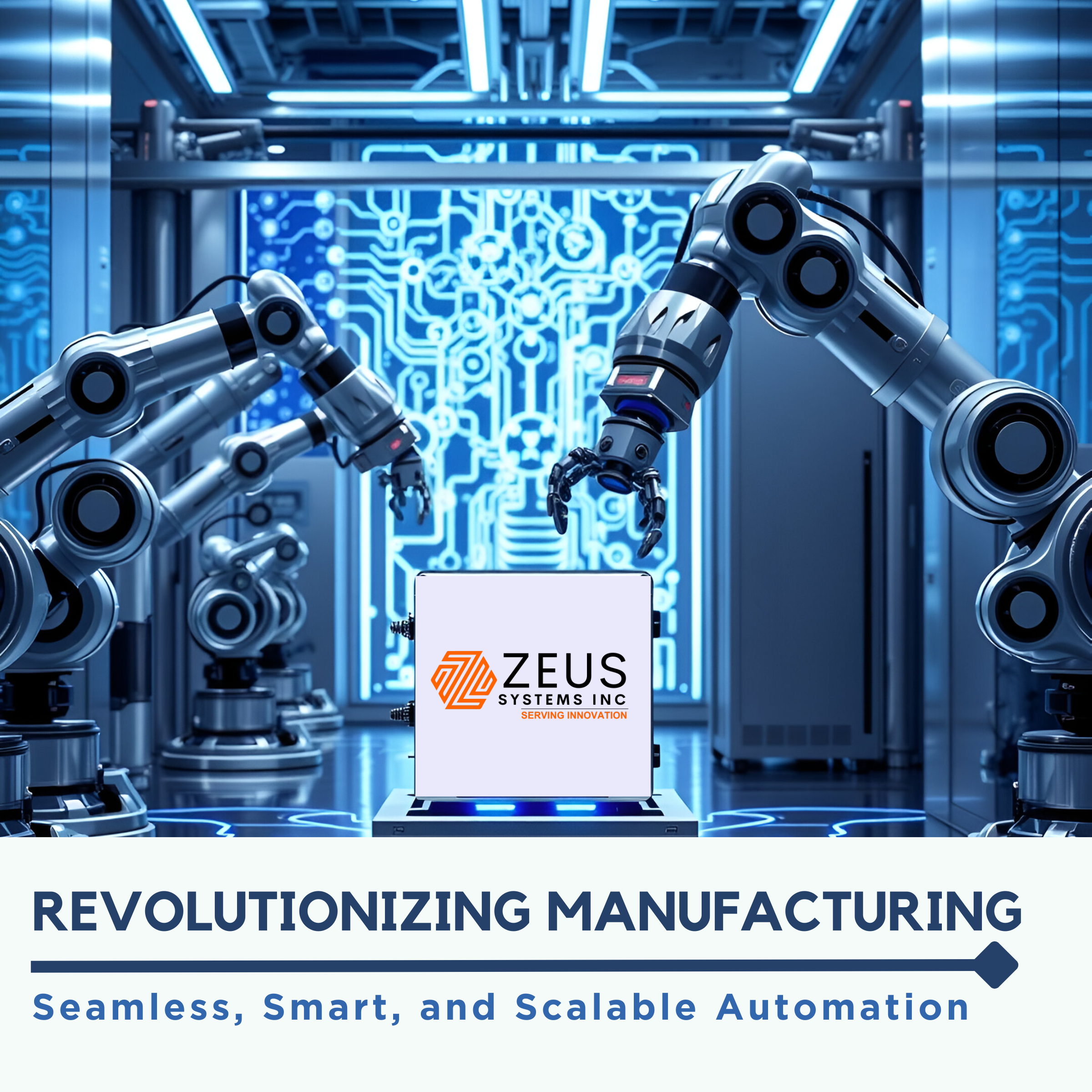In the fast-moving world of smart manufacturing, flexibility isn’t a feature—it’s the foundation. Markets are shifting faster than ever, product life cycles are shrinking, and manufacturers face a critical choice: adapt quickly or fall behind.
Enter the next evolution of intelligent manufacturing: Plug-and-Produce Modular Automation Systems. But this isn’t the plug-and-play of yesterday. At Zeus Systems, we are pioneering a new generation of automation—one that self-configures, self-optimizes, and scales at the speed of innovation.
The Challenge: Manufacturing in a World That Won’t Wait
Traditional production lines are built to last—but not to change. Retooling a factory to accommodate a new product or shift in volume can take weeks, sometimes months. That’s time manufacturers can’t afford in an era where custom SKUs, batch-size-one, and rapid prototyping are the new norm.
Plug-and-produce promises a solution: modular robotic and smart devices that can be rapidly added, removed, or reconfigured with minimal downtime and no code rewrites. But to unlock true agility, modularity must evolve into intelligent orchestration.
1. Self-Aware Modular Cells
Our plug-and-produce modules are not just devices—they’re autonomous agents.
Each unit—be it a robotic arm, vision sensor, or end-effector—comes with embedded cognition. They understand their capabilities, communicate their status, and can dynamically negotiate roles with other devices in the ecosystem. No manual configuration required.
Key innovation:
Our modules support “real-time role negotiation”—allowing devices to delegate or assume tasks mid-process based on performance, workload, or wear.
2. Digital Twin Continuum
Every module is mirrored by a lightweight, continuous digital twin that updates across edge, fog, and cloud layers. When a new module is plugged in, its digital twin instantly syncs with the production model, enabling predictive planning, simulation, and autonomous decision-making.
Why it matters:
Manufacturers can test production flows virtually before deployment, with real-time constraint checks and performance projections for every new module added to the line.
3. Morphing Mechatronics
We’re pioneering morphable module technology: reconfigurable end-effectors and actuation units that shift physical form to match evolving tasks.
One hardware unit can transition from a gripper to a welder to a screwdriver—with zero downtime, powered by shape-memory alloys and dynamic control logic.
Imagine:
A universal hardware chassis that adapts its role based on the product variant, reducing SKUs and increasing flexibility per square foot of floor space.
4. Swarm-Based Manufacturing Cells
Our modular automation is mobile, autonomous, and swarm-capable.
Modular cells can be mounted on mobile robotic bases and navigate to where they’re needed. This enables cellular manufacturing networks, where production tasks are dynamically distributed based on real-time conditions.
Use case:
When demand spikes for a custom variant, a swarm of modular bots reorganizes itself overnight to create a temporary production line, then dissolves back into general-purpose availability.
5. Secure Modular Marketplaces
We’re building the first industrial-certified plug-and-produce marketplace—a trusted digital exchange where validated module vendors publish performance-rated hardware, ready for drop-in use.
Each module includes a secure identity certificate powered by blockchain-based attestation. Upon connection, our system validates compatibility, calibrates parameters, and loads the optimal control schema autonomously.
6. Human-Centric Modularity
Future-proofing isn’t just about machines. Our system includes modular pods where humans and robots collaborate dynamically.
From ergonomic reconfiguration to adaptive safety zones and voice-controlled pace adjustments, we empower human workers to co-adapt with machines. Operators can “plug in” and the system responds with personalized workflows, lighting, and tool configurations.
7. Circularity Built-In
Sustainability is a core part of our design. All modules are tracked across their life cycles, with energy consumption, utilization rates, and recycling-readiness continuously logged.
Our platform alerts managers when modules fall below efficiency thresholds, enabling proactive recycling, refurbishment, or repurposing—ensuring leaner, greener manufacturing.
What This Means for the Industry
With Plug-and-Produce 2.0, we don’t just automate manufacturing—we animate it. The factory becomes an organism: responsive, intelligent, and alive.
This is more than incremental improvement. It’s a paradigm shift where:
- Setup times drop by 90%
- Changeovers become drag-and-drop events
- Production lines become service platforms
- SKUs explode—without cost doing the same
The Road Ahead
At [Your Company Name], we’re not only developing these technologies—we’re deploying them.
From next-gen automotive lines in Germany to electronics facilities in Singapore, our modular systems are already showing real-world results. Reduced downtime. Increased throughput. Greater resilience. Lower emissions.
We believe the future of manufacturing is flexible, intelligent, and human-aligned. And with plug-and-produce modular automation, the future has already arrived.
Want to See It in Action?
We’re offering select partners access to our Modular Innovation Lab—a hands-on R&D space where new ideas become scalable solutions.
Contact us to schedule a demonstration or co-develop a custom plug-and-produce roadmap for your production environment. 🔗 [Contact our Solutions Team]
🔗 [Explore our Modular Ecosystem Catalog]
🔗 [Request a Digital Twin Simulation]

